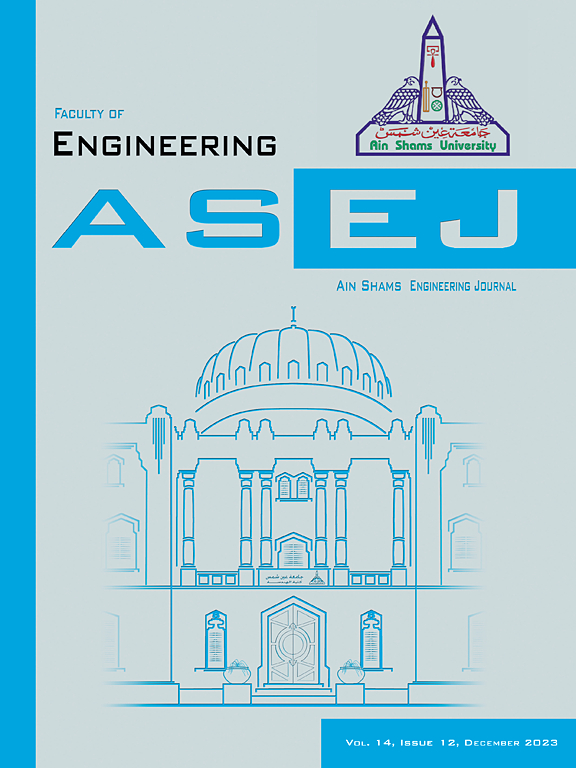微生物燃料电池废水除锌数学模型的建立
IF 6
2区 工程技术
Q1 ENGINEERING, MULTIDISCIPLINARY
引用次数: 0
摘要
锌用于制造各种产品,如合金、油漆、塑料和橡胶。金属锌生产过程中产生大量含锌废水。含锌废水会引起一些环境问题。利用双室微生物燃料电池是废水中锌的脱除和回收方法之一。对微生物燃料电池(MFC)进行数学建模,是评价不同运行参数对其性能影响的有效工具。将生物电化学动力学与电荷平衡和传质方程进行了整合。实验结果表明,锌浓度随时间的变化与模型计算值非常吻合。24小时后,锌浓度由1.82 mol/m3降至约0.2 mol/m3。当锌浓度从0 ppm增加到10 ppm时,pH值从7.4增加到8.2。温度的升高会导致系统pH值的升高。此外,在微生物燃料电池中,电势随着温度的升高而降低。生物量的生长速率在初期较低,但在9 ~ 24 h间急剧上升。在生物量生长速率较高的阳极室中,乙酸浓度显著降低。本文章由计算机程序翻译,如有差异,请以英文原文为准。
Development of mathematical model for the prediction of zinc removal from a wastewater in microbial fuel cell
Zinc is used in the manufacture of various products such as alloys, paints, plastics, and rubber. A large amount of wastewater containing zinc is generated during the production of zinc metal. Wastewater containing zinc can cause several environmental issues. One of the methods for the removal and recovery of zinc from wastewater is the use of double-chamber microbial fuel cells. Mathematical modeling of a microbial fuel cell (MFC) as a useful tool is used for the evaluation of the effect of various operating parameters on its performance. Integration of bio-electrochemical kinetics with charge balance and mass transfer equations was performed in the developed model. The findings showed great agreement between the experimental results and the values obtained from the model in terms of zinc concentration as a function of time. In 24 hr, the zinc concentration was decreased from 1.82 mol/m3 to approximately 0.2 mol/m3. It was also found that the pH increased from 7.4 to 8.2 with an increase in zinc concentration from 0 to 10 ppm. An increase in temperature can lead to an increase in the pH of the system. Furthermore, the potential decreased as temperature increased in the microbial fuel cells. The growth rate of biomass was lower at the beginning, but it was increased sharply between 9 hr and 24 hr. There was a considerable decrease in acetate concentration in the anode compartment where the rate of biomass growth was higher.
求助全文
通过发布文献求助,成功后即可免费获取论文全文。
去求助
来源期刊

Ain Shams Engineering Journal
Engineering-General Engineering
CiteScore
10.80
自引率
13.30%
发文量
441
审稿时长
49 weeks
期刊介绍:
in Shams Engineering Journal is an international journal devoted to publication of peer reviewed original high-quality research papers and review papers in both traditional topics and those of emerging science and technology. Areas of both theoretical and fundamental interest as well as those concerning industrial applications, emerging instrumental techniques and those which have some practical application to an aspect of human endeavor, such as the preservation of the environment, health, waste disposal are welcome. The overall focus is on original and rigorous scientific research results which have generic significance.
Ain Shams Engineering Journal focuses upon aspects of mechanical engineering, electrical engineering, civil engineering, chemical engineering, petroleum engineering, environmental engineering, architectural and urban planning engineering. Papers in which knowledge from other disciplines is integrated with engineering are especially welcome like nanotechnology, material sciences, and computational methods as well as applied basic sciences: engineering mathematics, physics and chemistry.
 求助内容:
求助内容: 应助结果提醒方式:
应助结果提醒方式:


